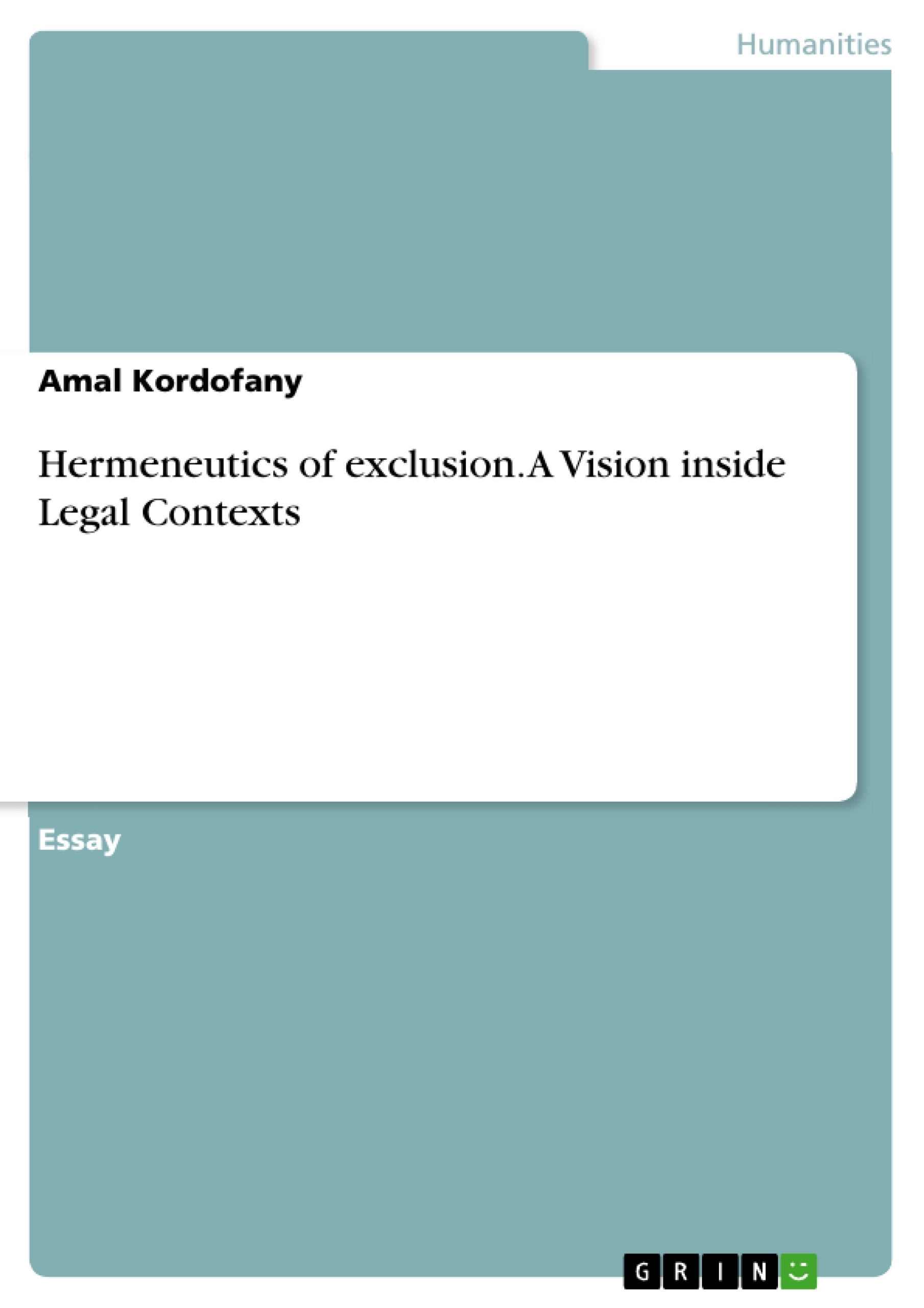This article attempts to highlight a new concept of reading the legal text, through many indicators that lead to the exclusion of other perceptions, in contrast to the theory of mental representation and the theory of reception which believe that understanding results from the emergence of perceptions when reading the legal text. Awareness of a text begins (ontologically), (the ontological presence of the reader), in contrast to the restricted evocation of the author The reader does not produce meaning, contrary to what the reception theory says but excludes meanings, and he withholds others, apparently refraining from excluding them, according to the indications of textual exclusion.
Inhaltsverzeichnis (Table of Contents)
- Hermeneutics of Exclusion: A Vision inside Legal Contexts
- Ontological Awareness
- The Exclusion Index
- Exclusion Mechanisms
- Applications of Exclusion Theory
- Judicial Notice and the Promotion of Exclusion
Zielsetzung und Themenschwerpunkte (Objectives and Key Themes)
This article introduces a novel approach to interpreting legal texts, focusing on the concept of "exclusion" rather than traditional theories of meaning construction. It challenges the notion that understanding arises from the merging of perceptions when reading legal texts, suggesting that reading actually involves a process of actively excluding other interpretations.
- The concept of ontological awareness as the basis for textual interpretation
- The role of exclusion indicators in shaping meaning and understanding
- The mechanisms of exclusion, both structured and intuitive
- Applications of exclusion theory in legal contexts, including dialogue and legal definition
- The implications of exclusion theory for judicial notice and the promotion of legal knowledge
Zusammenfassung der Kapitel (Chapter Summaries)
- Hermeneutics of Exclusion: A Vision inside Legal Contexts: This chapter introduces the central concept of "exclusion" as a key to understanding legal texts. It critiques traditional theories like reception theory, arguing that meaning is not derived from the reader's pre-existing expectations but rather through the act of actively excluding other interpretations. The chapter introduces the idea of "ontological awareness" as the foundation for this process.
- Ontological Awareness: This section elaborates on the concept of ontological awareness, arguing that the reader's consciousness plays a crucial role in shaping meaning through exclusion. It explains that the reader's prior knowledge and experiences create a dense field of potential interpretations, from which the text excludes specific meanings, leading to a dynamic and ever-evolving understanding.
- The Exclusion Index: This chapter introduces the "exclusion index," a set of indicators that guide the reader's process of exclusion. It argues that these indicators can be minor or major, working together to create a unified understanding of the text. The concept of "stratification" is introduced, suggesting that indicators exist in a hierarchical relationship, with each indicator excluding certain interpretations based on its position within the structure.
- Exclusion Mechanisms: This chapter explores the mechanisms through which exclusion operates. It argues that exclusion can be structured or intuitive, with structured exclusion being more controlled and deliberate, while intuitive exclusion arises from the reader's unconscious processes. It also suggests that the creation of legal texts itself is a process of building exclusion indicators, shaping the direction of interpretation.
- Applications of Exclusion Theory: This chapter provides examples of how exclusion theory can be applied to specific legal scenarios. It uses a dialogue between two individuals to illustrate how exclusion operates in everyday interactions and explores the impact of exclusion on legal definition and the interpretation of legal texts.
- Judicial Notice and the Promotion of Exclusion: This section focuses on the role of judicial notice in promoting exclusion within legal contexts. It examines the concept of judicial knowledge as a collective body of information that informs judicial decisions and how this knowledge shapes the exclusion process. It analyzes specific provisions of Sudan's Evidence Law (1993) to illustrate how judicial notice establishes specific exclusionary criteria for legal interpretation.
Schlüsselwörter (Keywords)
The main focus of this article is on the concept of exclusion as a central mechanism of legal text interpretation. Key terms include ontological awareness, exclusion indicators, exclusion mechanisms, and judicial notice. The article explores the implications of exclusion theory for understanding legal concepts, controversies, and the creation of legal texts. It also touches upon related fields such as reception theory, mental representation, and deconstruction.
- Citation du texte
- Amal Kordofany (Auteur), 2021, Hermeneutics of exclusion. A Vision inside Legal Contexts, Munich, GRIN Verlag, https://www.grin.com/document/1005522



